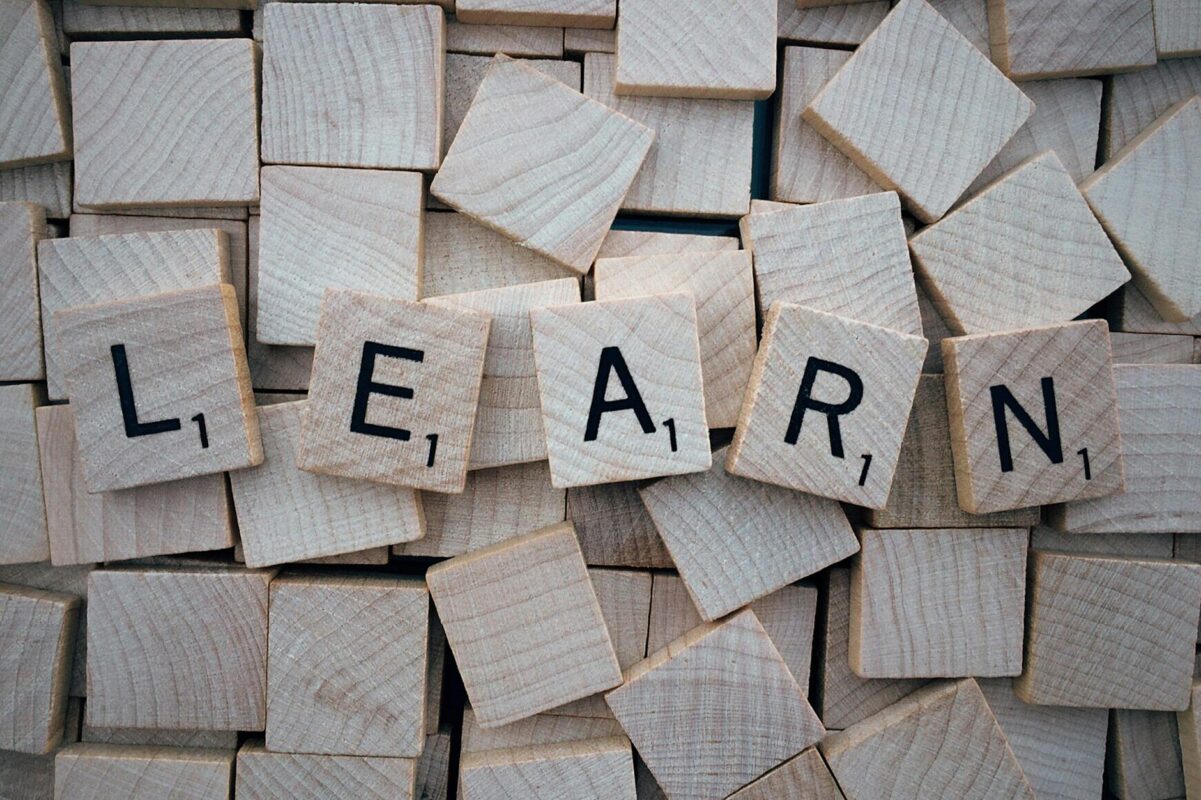First learn our today vocabulary with INGOAMPT iOS app: FlashCards INGOAMPT
Mastering German Double Conjunctions (Doppelkonjunktionen)
German grammar is known for its precision and complexity, and understanding how to use double conjunctions, or Doppelkonjunktionen, is a key part of mastering the language. These pairs of conjunctions allow you to express relationships between different ideas more clearly and are an essential component of both spoken and written German. In this article, we’ll explore the most common double conjunctions, provide detailed examples, and offer tips on how to use them effectively.
What are Double Conjunctions?
Double conjunctions are pairs of words that work together to connect clauses or phrases within a sentence. Unlike single conjunctions that typically link just two ideas, double conjunctions help convey a more nuanced relationship between multiple ideas. They are especially useful for expressing contrasts, alternatives, inclusivity, or exclusivity.
Common Types of Double Conjunctions
- Mit nicht nur …, sondern auch – Used to add additional information.
- Mit sowohl … als auch – Used to indicate that two things apply equally.
- Mit weder … noch – Used to express negation or the absence of multiple elements.
- Entweder … oder – Used to present alternatives or choices.
Types of German Double Conjunctions
Let’s dive deeper into the main types of double conjunctions in German and explore their usage with fresh examples.
Using “nicht nur …, sondern auch”
“Nicht nur …, sondern auch” is a common double conjunction used to indicate that not only one thing is true, but something additional is also true. This conjunction helps emphasize that both elements are important.
Example:
Original Sentence:
Er liest nicht nur Romane, sondern auch Gedichte.
(He reads not only novels but also poems.)
Explanation:
In this example, the speaker emphasizes that the subject doesn’t limit their reading to just novels, but also includes poems, highlighting an additional interest.
| Example Sentences | Translation |
|---|---|
| Sie spricht nicht nur Englisch, sondern auch Spanisch. | She speaks not only English but also Spanish. |
| Er trinkt nicht nur Wasser, sondern auch Wein. | He drinks not only water but also wine. |
| Ich habe nicht nur den Kuchen gebacken, sondern auch das Brot. | I baked not only the cake but also the bread. |
Tips:
When using “nicht nur …, sondern auch,” ensure that the two elements being linked are grammatically parallel, meaning they should be the same part of speech (e.g., two verbs, two nouns).
Using “sowohl … als auch”
“Sowohl … als auch” is used to express that both elements mentioned are true or applicable. It can be translated as “both … and.”
Example:
Original Sentence:
Sie ist sowohl intelligent als auch fleißig.
(She is both intelligent and diligent.)
Explanation:
This sentence highlights that the person possesses both qualities, emphasizing their overall competence.
| Example Sentences | Translation |
|---|---|
| Wir besuchen sowohl Museen als auch Theater. | We visit both museums and theaters. |
| Das Auto ist sowohl schnell als auch sparsam. | The car is both fast and fuel-efficient. |
| Sie kann sowohl kochen als auch backen. | She can both cook and bake. |
Tips:
When using “sowohl … als auch,” make sure the elements being compared are of equal importance and are presented as equally true.
Using “weder … noch”
“Weder … noch” is used to express that neither of the two elements mentioned applies. It is a strong form of negation, emphasizing the absence of both elements.
Example:
Original Sentence:
Er isst weder Fleisch noch Fisch.
(He eats neither meat nor fish.)
Explanation:
This sentence emphasizes that the person does not consume either of the two options, indicating a strict diet choice.
| Example Sentences | Translation |
|---|---|
| Ich habe weder Zeit noch Geld. | I have neither time nor money. |
| Der Film war weder interessant noch spannend. | The movie was neither interesting nor exciting. |
| Wir konnten weder die Prüfung bestehen noch das Projekt abschließen. | We could neither pass the exam nor complete the project. |
Tips:
“Weder … noch” is very effective for making definitive statements. Be careful to ensure the sentence does not contradict itself by unintentionally implying that one of the elements might apply.
Using “entweder … oder”
“Entweder … oder” is used to present a choice between two possibilities. It implies that only one of the options can be true or applicable.
Example:
Original Sentence:
Du kannst entweder Pizza oder Pasta bestellen.
(You can order either pizza or pasta.)
Explanation:
This sentence presents two options, emphasizing that the person must choose one, but cannot have both.
| Example Sentences | Translation |
|---|---|
| Du kannst entweder bleiben oder gehen. | You can either stay or go. |
| Entweder du hilfst mir, oder ich mache es alleine. | Either you help me, or I’ll do it alone. |
| Wir reisen entweder nach Italien oder nach Spanien. | We’re traveling either to Italy or to Spain. |
Tips:
When using “entweder … oder,” it’s essential to provide two distinct choices. Using this conjunction helps clarify decisions or scenarios where only one outcome is possible.
How to Practice and Master Doppelkonjunktionen
Mastering Doppelkonjunktionen requires regular practice and attention to detail. Here are some strategies and exercises that can help you become more proficient:
- Daily Practice: Incorporate these conjunctions into your daily conversations and writing. Start by focusing on one conjunction each day.
- Flashcards: Create flashcards with examples of each double conjunction and their translations to test yourself.
- Writing Exercises: Write sentences or short paragraphs using each double conjunction to solidify your understanding.
- Peer Review: Practice with a partner or in a language group where you can correct each other’s usage of double conjunctions.
Real-World Applications of Double Conjunctions
Understanding double conjunctions isn’t just about grammar exercises—it’s about enhancing your communication skills in real-world situations. Whether you’re chatting with friends, writing an email, or consuming German media, these conjunctions will help you express yourself more clearly and accurately.
Examples in Daily Conversation:
When discussing your plans: “Ich werde entweder zu Hause bleiben oder ins Kino gehen.” (I will either stay at home or go to the cinema.)
When talking about your preferences: “Ich mag sowohl Schokolade als auch Eis.” (I like both chocolate and ice cream.)
In German Media and Literature:
Double conjunctions are frequently used in German books, newspapers, and films. Pay attention to how they’re used in context to deepen your understanding.
In Writing:
Whether writing an essay, a formal letter, or even a social media post, using double conjunctions can add clarity and sophistication to your German writing.
FAQs on German Double Conjunctions
What Are the Most Common Double Conjunctions in German?
The most common double conjunctions include “nicht nur …, sondern auch,” “sowohl … als auch,” “weder … noch,” and “entweder … oder.”
How Can I Practice Double Conjunctions Efficiently?
Practice daily by incorporating them into your writing and speech. Flashcards, exercises, and real-life application are key.
What Are Common Mistakes When Using Double Conjunctions?
A common mistake is failing to maintain parallel structure, where the elements linked by the conjunction are not grammatically equal.
Is There a Difference Between Using “sowohl … als auch” and “nicht nur … sondern auch”?
Yes, “sowohl … als auch” is more neutral and inclusive, while “nicht nur … sondern auch” adds emphasis by stressing the inclusion of something additional.
Can I Use Double Conjunctions in Formal Writing?
Absolutely! Double conjunctions are useful in both formal and informal contexts and can enhance the clarity and impact of your writing.
How Can I Avoid Mixing Up “weder … noch” with “nicht”?
Remember that “weder … noch” is used to negate two elements, while “nicht” is used for general negation. Practice by comparing sentences using both.
Conclusion
Mastering German double conjunctions is a crucial step towards fluency. By understanding how to use “nicht nur …, sondern auch,” “sowohl … als auch,” “weder … noch,” and “entweder … oder,” you’ll be able to express complex ideas more clearly and effectively. Practice regularly, and soon, these conjunctions will become a natural part of your German language toolkit.



